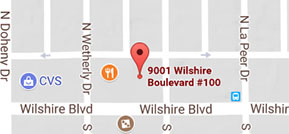Retina Surgery
Vitrectomy
Vitrectomy surgery (or pars plana vitrectomy) is a common surgical procedure that is used for a wide number of conditions of the retina. These include: diabetic retinopathy,retinal detachment, macular pucker, macular hole and vitreous hemorrhage to name a few. The complexity of the procedure varies a great deal based on the underlying condition. For repair of retinal detachments, vitrectomy surgery may be performed alone or in combination with scleral buckle surgery.
The surgery is performed by making three small incisions (about the size of a needle) through the white part of the eye known as the sclera. Through these incisions, fluid is introduced into the central portion of the eye while the vitreous jelly of the eye is removed by a rapid cutting instrument. The surgery is performed through an operating microscope. For more extensive work, other instruments such as microscissors or microforceps may also be introduced through these incisions to perform microsurgery near the retinal surface. Laser may also be performed through these incisions.
Retina Detachment
The retina is a layer of nerve cells that lines the inside of the eye, like wallpaper, and enables the eye to see images. For the retina to function and remain healthy, it must stay attached to the inside of the eye because part of its blood and nutrient supply comes from the eye wall. If the retina is separated from the back of the eye, then it can become damaged, sometimes leading to permanent vision loss. Retinal detachments are painless. Most commonly, a retinal detachment occurs after there is a tear in the retina. The retina is a flat sheet, and if it is torn, fluid from inside the eye can go through the tear and separate the retina from the back of the eye, causing a detachment. The most common symptoms of a retinal detachment are flashes of light, new floaters, curved lines, waves, or “cobwebs” in the line of vision, or a loss of part of the peripheral (side) field of vision. If any of these symptoms occurs, it is important to contact your eye doctor immediately. Sometimes, a retinal tear is discovered before the retina detaches. In these cases, the tear can be treated with laser (a treatment called laser retinopexy) or with freezing treatment (also called cryotherapy). These treatments create a small scar that acts as a “spot weld” to keep the retina attached to the back of the eye and prevent fluid from getting under the retina through the tear.If the retina is detached, then the treatment is surgery. Every retinal detachment is different and there are many ways to repair a retinal detachment. Retinal detachments can be repaired in the office using a procedure called pneumatic retinopexy or in the operating room by scleral buckle or vitrectomy surgery or a combination of these surgeries. Not every patient is a candidate for an in-office surgical repair (pneumatic retinopexy). Your doctor will carefully examine your retina and customize your surgery to achieve the best result for you.




